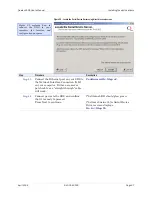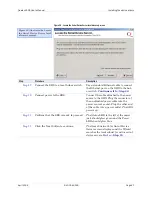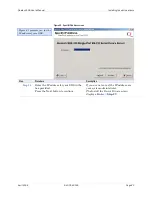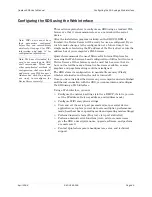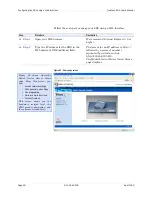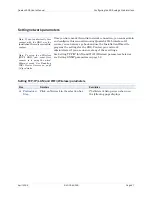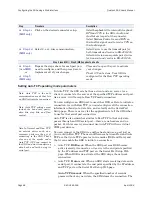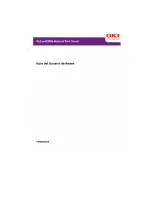
Quatech SDS User’s Manual
Configuring the SDS using a Web interface
April 2008
940-0183-155
Page 49
Step
Procedure
Description
Step 3
For Static only, set the Address mask.
The Address mask is a string of 0's and
1's that screens out the network part of
an IP address so that only the host
computer part remains. Most people
select the Class C Address mask.
¾
Class A: 24 bits
¾
Class B: 16 bits
¾
Class C: 8 bits
Table 8 - Class A, B, and C address masks
Table 9 - Complete list of address masks
Class
Host bits visible Address mask
A 24
255.0.0.0
B 16
255.255.0.0
C 8
255.255.255.0
Address mask
Host bits
255.255.255.252 2
255.255.255.248 3
255.255.255.240 4
255.255.255.224 5
255.255.255.192 6
255.255.255.128 7
255.255.255.0 8
255.255.254.0 9
255.255.252.0 10
255.255.248.0 11
255.255.240.0 12
… …
255.255.0.0 16
255.254.0.0 17
… …
255.128.0.0 23
255.0.0.0 24
Step 4
For Wired Setup, go to
□
Step 11
.
For Wireless Setup, continue with
□
Step 5
.
Before the SDS can communicate on an
802.11b/g wireless network, the WLAN
settings must match the wireless
network. By default, the SDS is set to
Infrastructure network mode and its
SSID, which is its wireless Network
Name, is blank. This allows it to connect
to any available wireless network.



